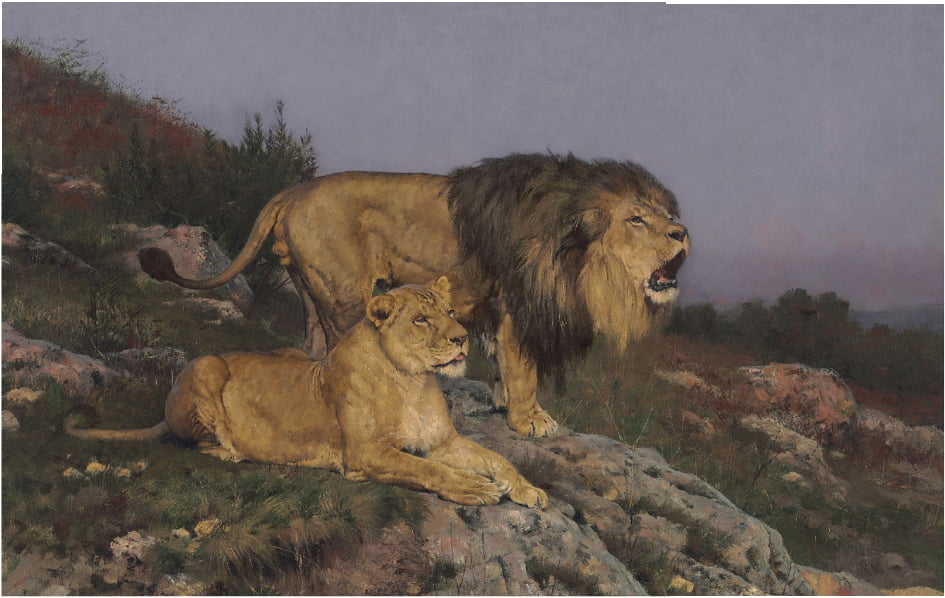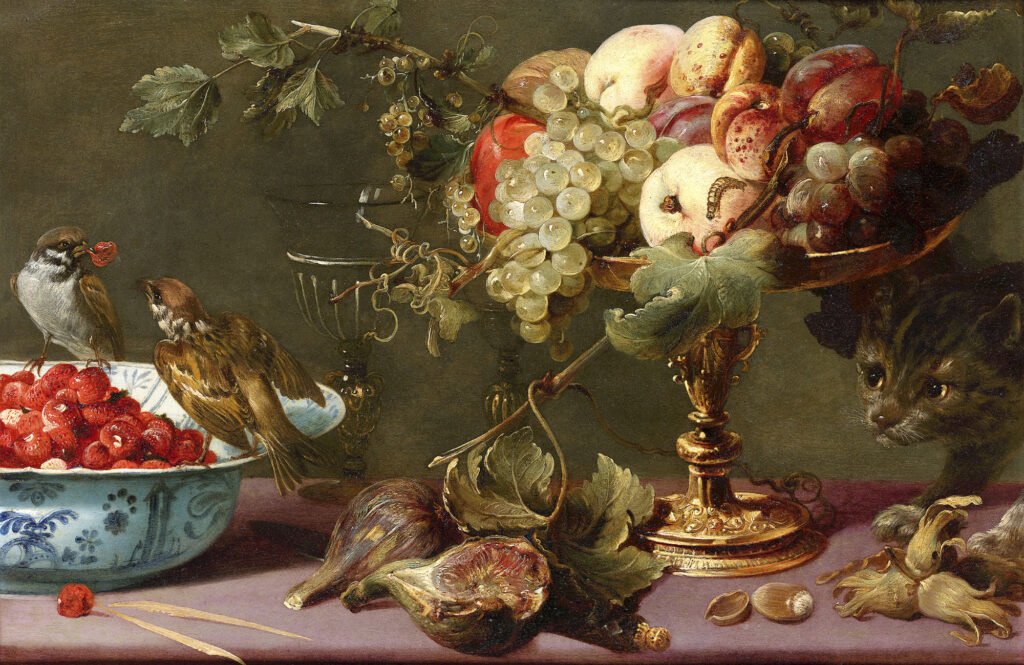Géza VASTAGH
(Cluj-Napoca, 1866 - 1919, Budapest)
Lion's domain
1893
Oil on panel, 122 x 165.2 cm
Signed and dated lower left: "Vastagh Geza 1893"
In the world art history Géza Vastagh became a “lion”‘s painter. He was born into a family of artists and revolutionaries. Vastagh was inspired by Realist approach with a particular emphasis on studying the work of Gustave Courbet in Paris. He studied and live both in Munich and in Paris. Géza his first art education from his father, but was sent to Munich in his mid-teens to study at the Academy of Fine Arts. Vastagh ventured to Paris in 1885 where he exhibited some of his portraiture. Not yet twenty years old, he received a favorable notice from Alfred de Lostalot in the Gazette des Beaux-Arts. Rather than remain in Paris, however, he returned to Hungary, this time to Budapest where his father had established a studio in 1876. The senior Vastagh served as a court painter to Archduke Joseph Karl Ludwig, often receiving commissions for official public buildings such as the Hungarian State Opera; in addition, he maintained his private practice as a portrait painter, increasingly working for local aristocrats. Géza Vastagh painted Playtime in 1886, probably in Budapest; the sitter is unknown, but it is clear that the artist has developed into a sophisticated genre painter. The interior environment is filled with exotic objects—tropical palms, a tiger-skin rug, a small Moorish revival end table and a Japanese fan—all indications that his time in Paris was well spent in absorbing the trends in contemporary art.
The following year Vastagh began traveling to North Africa where he encountered an environment that was radically different from Europe, both culturally and physically. It was there that he started to paint lions, an image that would come to dominate his oeuvre for the rest of his life. He began with a trip to Tunisia and Algeria in 1890, but would eventually expand his scope to encompass large swaths of the Middle East. Simultaneously, he turned his attention to venues in Germany, exhibiting at the Annual Exhibition in Munich in 1890 and the International Art Exhibition in Berlin in 1891; both of these shows were similar to the annual Paris Salon in that they were the most prestigious exhibitions of the year, and generally contained a wide selection of current artistic production. Vastagh’s entries for both expositions were paintings of animals—lions, ducks, and chickens. The farmyard animals might best be described as Realist genre paintings, but the canvases of lions are anchored in the tradition of animal painters such as Rosa Bonheur. Vastagh maintained a consistently high profile in both Berlin and Munich until the onset of World War I. He participated in the annual exhibitions regularly and sought out independent commissions as well.
In 1899, his work is noted in an article in the New York publication, The Collector and Art Critic: “Another notable importation is a large lion’s head by Vastagh Giza, the Hungrian artist, whose work is scarcely known in this country.” And turning eastwards, Vastagh participated in an exposition in St. Petersburg and Moscow with a painting titled Lutte de taureaux (Bulls fighting). The Russian expo was part of a program of cultural, economic and industrial exchanges between the tsar’s empire and the French government. It should be noted that this was also one of the international expositions where art nouveau received significant attention. Although Vastagh’s work is unlikely to be described as art nouveau, it nonetheless shares some of the design reform movement’s fascination with exotic and folkloric motifs.
Painted in 1893 “Lion’s domain” is a great example of Vastagh’s animal genre and his artistic heritage.
Provenance:
Private collection, USA;
Important private collection, Zürich, Switzerland




